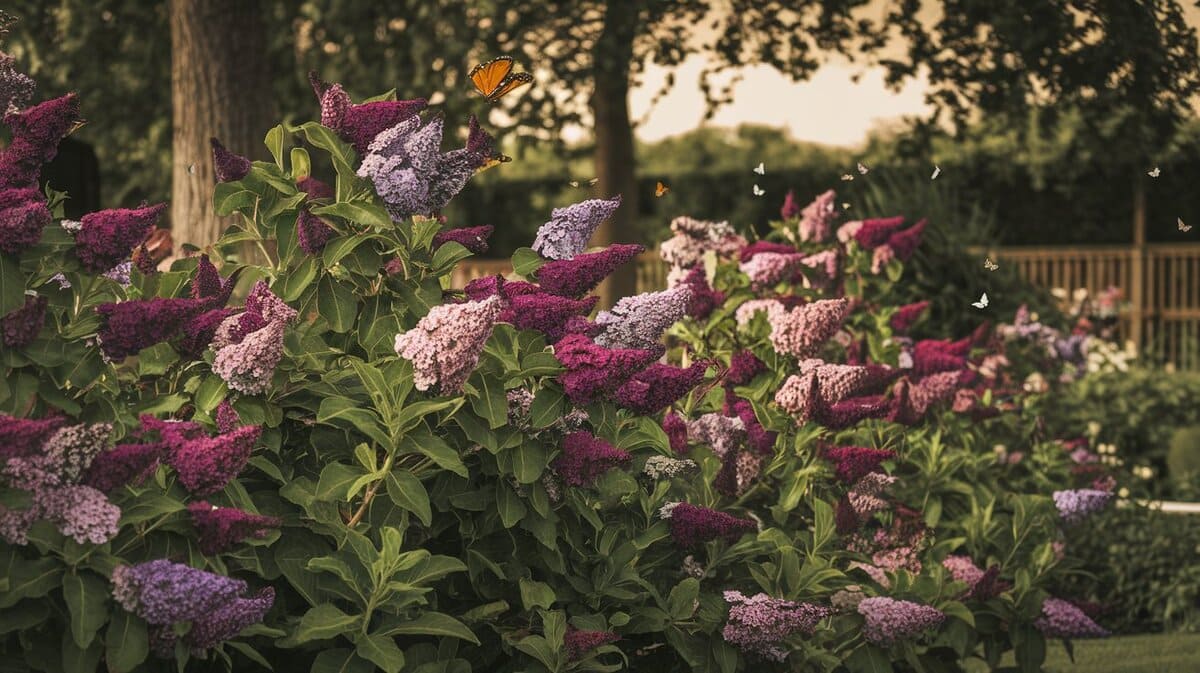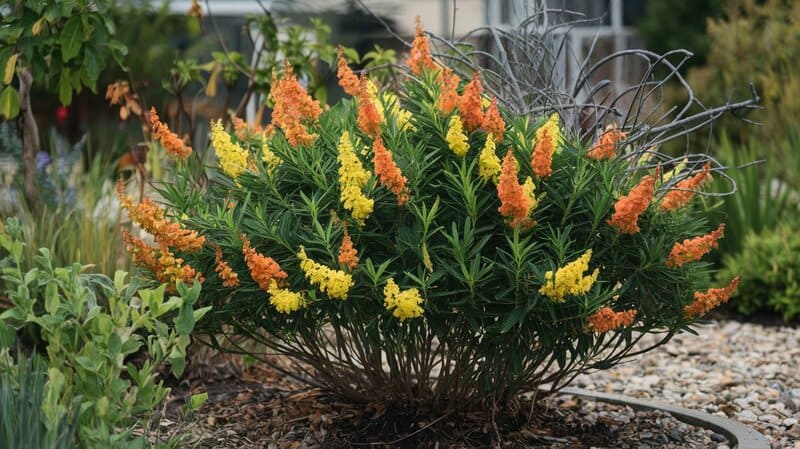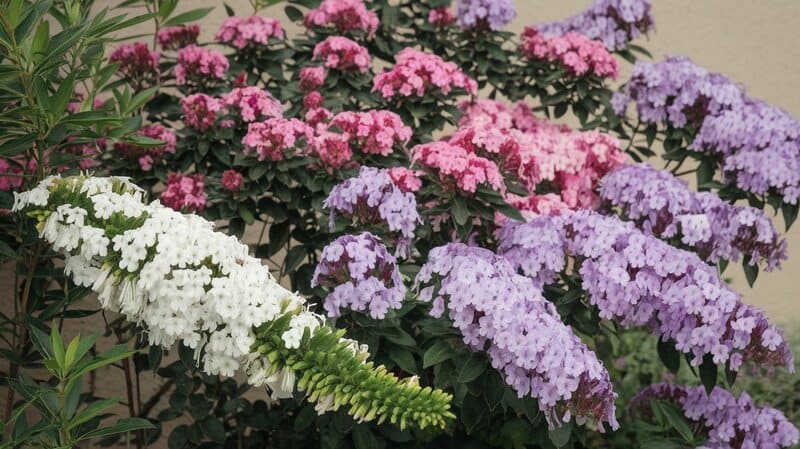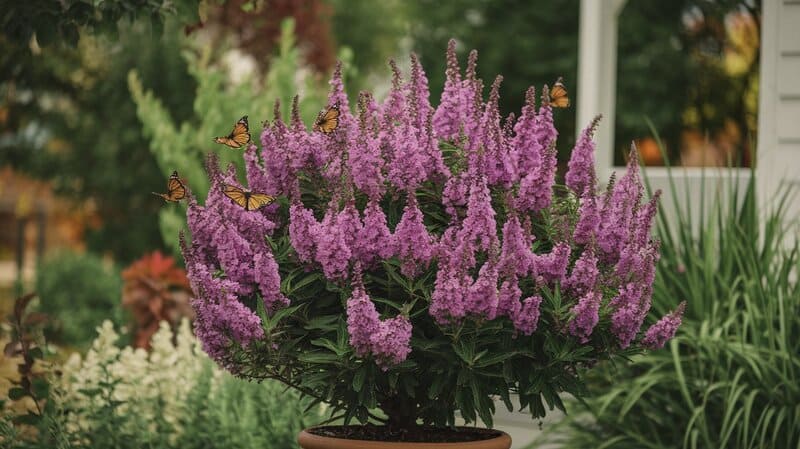How to Grow and Care for Butterfly Bushes in Your Garden
Butterfly Bushes in Your Garden

Butterfly Bushes or Buddleia is a spectacular ornament in any garden due to reports confirming its function in attracting different pollinators. Whether as an ornamental plant due to its tall and curved flowering stems which appear in an array of colors or a food source for bees, butterflies and birds this perennial shrub is a great addition to any garden.
Why Butterfly Bushes Are Ideal for Pollinator Gardens :
Butterfly bushes are magnets for pollinators especially butterflies and bees Due to its importance, the butterfly sage (sage aureus marginatus)commonly attracts pest like the white butterfly.
Fragrant flowers contain rich nectar and this makes give’s them a special appeal to those beneficial insects.
When you plant butterfly bushes you are supporting the garden in a positive way by offering food and shelter for other insects and giving a fun and vibrant addition to the gardened area.
Best Soil and Location for Growing Butterfly Bushes :
To help your butterfly bush grow, there are a few crucial amenities to focus on – the soil and the site. These plants grow well under condition that require good drainage soil with pH of the soil ranging between 6 and 7 as this helps in absorption of nutrients.
Although they do well in conditions which may be unsuitable for most other plants, adding organic matter such as compost can greatly improve performance.

Concerning soil, the plants do well in well-draining soil, thus plant then is an area with well-drained soil or better still use a container with drainage holes to grow the butterfly bushes.
This plant, which prefers direct sunlight, will definitely pay you back with lots of flowers and green leaves during the upcoming growing period.
Watering and Fertilizing Butterfly Bushes :
These plants are rather Xeric once they are fully grown in, so butterfly bushes are perfect if you do not have the time to water the plants daily. During the first growing season, they should be watered to encourage root penetration in the ground properly.
After they’re established, watering can be reduced particularly during the rainy season For detailed information on ideal watering practices and requirements, the following links can be useful. Butterfly bushes should not be fertilized most of the time since it grows best in poor to moderately fertile soil.
But it is wise to apply a diluted application of balanced fertilizer at the beginning of the spring season, in an effort to optimize the plants’ growth and the blooms as well.
Pruning Butterfly Bushes for Optimal Growth :
Trimming or pruning is as important in order to enhance the health and shape of your butterfly bush. It is recommended to prune in the later part of winter or the early part of spring since it provides the plant good starting point towards a new growing season. I
deally, the stems used in the previous year should be pruned down to one third their length. It also leads to growth of thicker branches and a likelihood of enhanced growth of flowers. Another benefit of pruning is that, it assists in shaping of the plant hence avoiding the plant going extremely bushy all over or becoming too long stemmed.
Butterfly Bush Varieties: Which One Is Best for Your Garden?
If you are a butterfly enthusiast, there is good news – there are many different types of butterfly bush, which you can buy. These varieties have special features that should be expected to give your garden a new look. Popular options include:
- Buddleia davidii :
Stem: This forms tall spikes and bearded flowers with profuse small flowers in television tubular bracts about the middle of the spikes.
- Buddleia alternifolia:
Has high arching branches and lavender flowers, making it suitable in adding bling to any compound’s beauty.
- Buddleia ‘Miss Violet’:
An intermediate type with bright purple flowers, suitable for the small garden or for growing in the pots.
This paper discusses the size of the butterfly bush and the color to consider while choosing the variety because of their compatibility with the garden.

How to Attract Butterflies and Bees with Butterfly Bushes :
A longer flowering season is attained by planting your butterfly bushes in groups opposed to as individuals out in the landscape. Arranging these plants together makes a flare that is more attractive to pollinators than when they are arranged independently.
Also ensure you do not use pesticides to control pests in your garden because they are dangerous to useful insects.
To further improve the pollinator friendly environment one should add another nearby water source, an example of which would be a dish filled with water and small stones on the bottom.
Common Diseases and Pests Affecting Butterfly Bushes :
Butterfly bushes are usually rather unproblematic but they can fall victim to several diseases and pests. Common issues include:
Powdery Mildew:
This is a fungal disease that presents itself as a white powdery substance over the leaves and it is cured by proper aeration round the plant. More informations her.
Aphids:
They are small insects and their attacks cause leaf curling, and they are usually noticed on new growth. Their natural enemies, including ladybugs, can help to check on their numbers. More her.
A good practice when it comes to keeping the plants healthier is to inspect your plants often for diseases or pest. It saves worsened problems in the future when taken at an early stage and appropriate measures are taken.
How to Propagate Butterfly Bushes :

Butterfly bushes are reasonably easy to propagate and give you the opportunity to expand your garden without investing much money. Propagation is best done through soft stem cutting that ought to be taken during early summer.
To do this, use 4-6 inches cuttings which are then deprived of the lower leaves and put into a pot containing a correct drainage mix. Water the plants regularly until roots appear which normally takes a few weeks.
Once well rooted, you can transfer the new butterfly bushes into your own garden to add more beauty to your landscape.
Seasonal Care for Butterfly Bushes :

It is necessary to pay special attention to the seasonal care of your butterfly bushes to keep them properly growing all year long. In spring you should put a layer of mulch at the base of the plant that will help it retain moisture and prevent weeds from growing.
In the course of summer, parasites may be found on the plants; besides, water supply must be timely during a dry summer. In fall, it may be necessary to prune any dead stems and put the bush to rest and wait for winter by providing a thin layer of mulch to the root area.
This care routine is to be performed during early spring or late autumn when butterflies go through the state of dormancy thus helping the butterfly bushes withstand various weather conditions throughout its growing period in future.
"This content is useful - share it on social media!"

